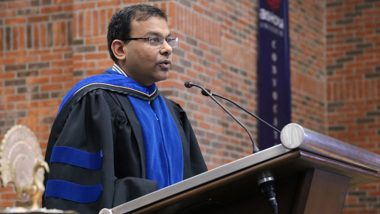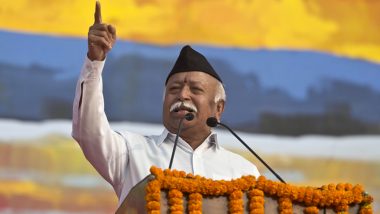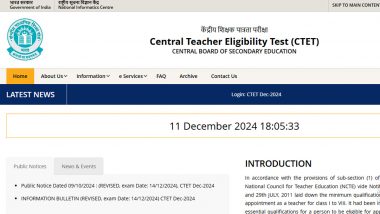India’s education landscape is poised for transformative growth, largely driven by the country’s demographic advantage. With over 200 million young people set to enter higher education over the next decade, the nation has become one of the most attractive markets for global educational institutions. While foreign universities have long sought to expand their presence in India, recent policy shifts, including the National Education Policy (NEP), provide fresh opportunities to bridge existing educational gaps. Vineet Gupta Ashoka University Founder, sheds light on both the potential and challenges associated with the entry of foreign universities into India.
India as a Major Growth Market for Higher Education
With a youth population outpacing that of most Western countries, India’s need for quality higher education is immense. As enrolment rates decline across the US and Europe, universities in these regions increasingly rely on international students. “Today, India has the largest ‘young population’ in the world. Students in the age group of 8-18 will enter college in the next three years. The number of these students is big, and foreign universities are keen to enter,” notes Vineet Gupta. India’s demographic growth offers foreign institutions a unique opportunity to expand into one of the world’s largest education markets.
However, Gupta cautions that only a few top-tier institutions may take the leap. “Historically, most top ranked universities have been wary of establishing international campuses. For those willing to enter India, the opportunity is clear: they can contribute to India’s capacity expansion, faculty development, and educational quality by setting new standards,” adds Vineet Gupta.
Government Policy and Foreign Investment in Education
India’s National Education Policy (NEP) represents a major shift toward a more globalized education sector. By emphasizing multidisciplinary education, experiential learning, and international partnerships, the NEP aims to make India a hub of academic excellence. For foreign universities, the NEP creates avenues for partnerships, industry internships, and the development of hands-on learning modules, all of which align with international education standards. Vineet Gupta highlights, “The NEP is forward-looking and promotes a multidisciplinary and experiential learning curriculum, which are key reforms needed for Indian higher education to excel. Establishing foreign campuses remains challenging due to regulatory and operational complexities, despite evolving policies.”
Challenges Foreign Universities Face in India
Foreign institutions face cultural, bureaucratic, and logistical obstacles when expanding to India. A major challenge is adapting to the diverse needs and expectations of Indian students. To succeed, foreign universities must tailor their curricula to local job market requirements and educational standards. Vineet Gupta Ashoka University Founder explains that these challenges might limit the number of international campuses established here, especially among elite institutions. “While foreign universities want to come, only a few will eventually be able to. For many institutions, establishing a second campus is not simple as navigating India’s regulatory landscape presents hurdles that foreign institutions must carefully manage,” he remarks
Potential Impact on Indian Education Standards
The entry of foreign universities could significantly elevate Indian education standards. Their expertise in pedagogy, research funding, and faculty training could greatly benefit domestic universities. Many international institutions excel in research, a critical area where Indian universities seek improvement. Gupta notes that collective philanthropy has helped Ashoka and Plaksha Universities advance their research capabilities, allowing them to align more closely with global standards. “Collective philanthropy expands the network and makes funds available for scholarships, research, and institution building,” Gupta continues, “Foreign institutions could further enhance this trend by contributing to the research ecosystem, raising India’s academic profile, and creating more research-oriented career paths.”
Comparative Programmes and Multidisciplinary Approaches at Ashoka University
Indian institutions like Ashoka University already embrace global standards, offering multidisciplinary curricula that foster a holistic, cross-disciplinary learning environment. Ashoka’s liberal arts programme allows students to pursue majors that integrate critical thinking, sciences, humanities, and social sciences, with 13 pure and 12 interdisciplinary majors at the undergraduate level. Such programmes aim to cultivate problem-solving and analytical skills valued in today’s global job market. “Ashoka’s curriculum model allows students to experience both breadth and depth, preparing them to excel in diverse career paths. This fosters a nuanced understanding of the interconnected nature of knowledge and hands-on skillset preparing them to navigate the complexities of the modern professional landscape”
Plaksha University, another pioneering institution co-founded by Gupta, embodies similar ideals, particularly in engineering education. Plaksha’s unique degrees in Computer Science and AI, Robotics and Cyber Physical Systems, Biological Systems Engineering, and Data Science are crafted to address today’s complex challenges. Vineet Gupta continues, “The problems around us have changed, and engineering disciplines must reinvent to keep up with these evolving challenges. Through its interdisciplinary approach, Plaksha aims to cultivate engineers capable of addressing the multidisciplinary nature of contemporary problems.”
Global Rankings and Research Capacity
Foreign universities can also bolster India’s global standing in education. Gupta notes that international rankings, such as those by QS and Times Higher Education, heavily favour research output—a field where Indian institutions often lag. By collaborating with or incorporating foreign universities, Indian institutions can gain access to increased research funding, collaborative projects, and advanced facilities. Such efforts may enhance India’s research standards and ultimately improve its position in global rankings.
Despite the obstacles, Vineet Gupta is optimistic about the potential benefits of international partnerships and investment in Indian education. Gupta says, “The NEP promotes critical reforms such as the creation of a National Research Foundation and an academic bank of credits. These are the right steps to help Indian higher education thrive. As Indian universities grow their global influence, they may also attract a more diverse student body, helping local institutions stand out on the international stage.”
A Path Toward Educational Excellence
While the entry of foreign universities presents clear opportunities, Indian institutions are also rising to the challenge by adopting innovative models. Collective philanthropy and interdisciplinary education at institutions like Ashoka University have helped redefine educational standards in India. Vineet Gupta Ashoka University Founder believes that with ongoing reforms and international collaborations, India can create more institutions of global repute, producing graduates who are not only technically adept but also equipped with critical thinking and leadership skills.
“As the demand for higher education grows, India’s ability to attract and collaborate with foreign universities could be a defining factor in its academic evolution. By embracing both local innovations and global partnerships, the future of Indian education looks bright, paving the way for a new era of educational excellence,” he concludes.













 Quickly
Quickly




















